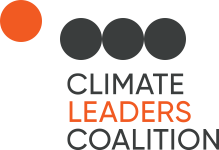By 2028, global AI investment could reach over US$600 billion, driven by generative and agentic AI.
As AI’s reach expands, so does its appetite for computational power – with serious implications for energy use, emissions and sustainability.
AI also offers powerful solutions to help Australia realise a more sustainable future through optimising energy grids, their management and forecasting demand, AI driven telemetry and monitoring systems and efficiency strategies.
AI for Climate Framework
The AI for Climate framework charts AI applications against the IPCC’s (Intergovernmental Panel on Climate Change) framework of Mitigation, Adaption and Restoration.
Developed by members of the CLC, this work highlights how cutting-edge AI technologies are being deployed to reduce greenhouse gas emissions, enhance climate resilience, and regenerate natural ecosystems. From optimising renewable energy and forecasting extreme weather patterns, to accelerating ecosystem restoration through machine learning, the framework showcases some of today’s most innovation and impactful AI-driven climate solutions.
We extend our thanks and gratitude to EY for their invaluable expertise and collaboration in supporting the development of the Solution Mapping Framework.
AI and Scope 3
Scope 3 emissions are often the largest part of an organisation’s carbon footprint, but also the hardest to measure and reduce. Historically, managing them has required resource-intensive processes that strain internal capacity and limit impact. This report explores how AI can change that.
Through real-world insights from CLC members, the report identifies the most common pain points in Scope 3 reporting, from supplier data verification to regulatory compliance, and pinpoints where AI can offer the greatest value. It outlines how AI can:
- Automate data collection and mapping
- Enhance data quality and consistency
- Enable emissions forecasting and decarbonisation strategies
- Support target setting with precision and speed
It also offers a technical framework for AI adoption, a curated set of use cases, and a practical roadmap for implementation.
Whether you’re a business leader, sustainability expert or technology professional, the AI and Scope 3 report is designed to foster collaboration across teams and provide the strategic and technical insight needed to scale action.
AI alone won’t solve the Scope 3 challenge, but used responsibly, it can unlock new levels of efficiency, transparency and impact.
We extend our thanks and gratitude to EY for their invaluable expertise and collaboration in supporting the development of the report.
AI Climate and the Environment: Strategies to Reduce the Impact
Artificial intelligence is transforming every sector of the economy – but its rapid growth comes with environmental costs. Data centres powering AI consume vast amounts of energy, water, and critical minerals, and generate e-waste and embodied carbon that can lock in emissions for decades.
This Climate Leaders Coalition report highlights both the risks and opportunities of AI adoption. Left unchecked, AI could add 3.5 gigatons of carbon emissions globally by 2035 – equivalent to 10% of today’s total emissions. But responsibly designed and deployed, AI can also accelerate Australia’s energy transition, optimise resource use, and help organisations achieve net-zero targets.
The guide provides:
- Analysis of key impacts – including energy demand, emissions, water consumption, rare earths, waste and ecosystem effects.
- Practical strategies – from retrofitting and redesigning data centres, to optimising AI models and embedding circular economy approaches.
- Case studies – featuring CLC members Microsoft, Telstra, Schneider Electric and SAP, demonstrating sustainable AI practices in action.
- Leadership principles – six clear guidelines for C-suite leaders and technology specialists to ensure AI procurement and governance align with climate goals.
The message is clear: Australian organisations face a pivotal choice. By embedding sustainability into AI adoption today, leaders can ensure that digital innovation supports, rather than undermines, our climate commitments.

